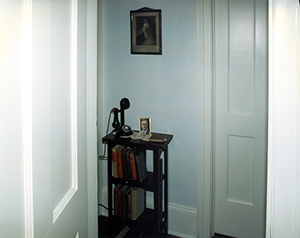In the preceding sections of this report, the architectural evolution of the building has been outlined in some detail, based upon investigation of archival material and of the substantial portion of the building fabric that survived the years of neglect and the 1994 fire. While loss of material has made impossible a definitive answer to some questions about the architecture of the building, much of its long and complex evolution has been documented and can be interpreted.
As with most house museums, however, documenting the historic interiors of Apartment #1 (i.e., the furnishings, decoration and other objects that filled the apartment when Marsh and Mitchell were in residence there from the summer of 1925 through the summer of 1932), has been a far more difficult task. Rare is the site that, through some quirk of history or personality, has an authentic historic interior that remains intact (Joel Chandler Harris’ bedroom at the Wren’s Nest is, perhaps, the best local example). By and large, these interiors have vanished leaving only the scantiest of clues as to their particulars.
A moment’s reflection will show why this is necessarily the case when trying to document an aspect of the site that is transient by its very nature. Furniture is moved from room to room and from site to site; walls are repainted or repapered, often on a whim; new pieces are acquired and others are removed; and the large array of personal objects that characterizes most living space can rarely be found in the same place from one day to the next. In addition, in the case of Apartment #1, even most of the scant physical evidence that might have survived (e.g., nail holes and shadows where pictures were hung) was long ago lost through the 1964 remodeling, subsequent neglect, and the fires. As a result, true restoration of a historic interior is rarely an option, simply because there is not the sort of comprehensive documentation that would be necessary to make that possible.
Certainly the documentation for the interiors of Apartment #1 is limited by the lack of any photographic evidence. Although cameras were being used on a fairly casual basis in the 1920s, their use for interior shots was limited by the lack of flash attachments, which did not come into widespread use until after World War II. So it is not really surprising that there would be no historic photographs of the interior of the apartment. What has emerged through the research, however, is some significant primary documentation for these interiors, including for most of the major pieces of furniture. Even many of the smaller, more transitory, pieces have been documented (e.g., the Casanova print over their bed and the blue satin and lace bedspread).
From analysis of this information, a historical framework can be established that can take us beyond merely creating a “period” interior and can suggest what made Mitchell’s interiors different from typical interiors of the 1920s. Thus, it will be possible to recreate the historic interiors of “the dump” as a sort of stage set on which to interpret Mitchell and her writing of Gone With the Wind. In his book Recreating the Historic House Interior, William Seale, the nation’s most-noted authority on historic interiors, outlines a process that has been followed in developing this plan for furnishing and decorating the apartment. Based on the historical record but not limited by that record’s inevitable gaps and inconsistencies, the process aims to approximate the appearance of the apartment in the 1920s so that visitors might gain a better understanding of the genesis of one of the world’s most popular books. [1]
Interpretation
The mission of Margaret Mitchell House, Inc., is twofold. One has been the actual preservation and reconstruction of the site itself. The other is the obligation to educate the public about the site, which is done through tours, publications, and exhibits, and even through the merchandise that is sold in the museum store. All of these are tools for “interpretation” of the site, a word that has become part of the jargon of historic preservation but the meaning of which can be easily misunderstood.
At the simplest level, “to interpret” means to explain the meaning of something or to make it understandable by means of a translation. Obviously, the ability to communicate information to visitors who do not speak English would satisfy the literal meaning of a good interpretative program.
For present purposes, however, interpretation should be seen as a planned effort, a broad program to create for the visitor an understanding of the history and significance of events, people, and objects with which the site is associated. Interpretation is not simply the recitation of bare facts. The activity of interpretation—the tours, whether guided or self-guided; the exhibits and displays of photographs and other artifacts; the booklets, brochures, and other publications—all of these interpretive tools use facts but have as their primary aim the revelation of meanings and relationships in what is being observed. It is the meaning of the facts and their relationships with one another that allows for true understanding of history and will, if the interpretive program is successful, allow the visitor to come away with an understanding of why the Mitchell House is important.
The rich history of the site could certainly support several locally-significant interpretive themes besides those relating directly to Mitchell herself. From Tight Squeeze of the 1860s through turn-of-the-century Peachtree mansion to modern apartment building in the “Roaring 20s,” the Mitchell House site can be a quite useful historic resource for Atlanta in a number of ways. Yet, none of these themes can approach in significance those that revolve around Mitchell’s writing most of Gone With the Wind while living with her husband, John Marsh, in Apartment #1 between the summer of 1925 and early 1932.
To be in the place where this book was written will be the main reason most people visit the site and should always be the focus for interpretation of the apartment. Certainly, the front room with its typewriter, table, and chair surrounded by piles of books, manuscripts, manila envelopes, and so forth should always appear as if Mitchell had just been interrupted in her work.
Of course, interpretation of Mitchell’s experience of writing there will necessarily be bound up with interpretation of the apartment as a place to live and this aspect of the apartment exhibit is certain to be of interest to visitors. The 1920s, while modern in some respects, were vastly different from our own era. There was a single telephone in the apartment, for instance, but no refrigerator, an icebox on the back porch remaining the typical arrangement for most people in the ‘20s. There were electric lights, too, but surprisingly perhaps, they had no radio, the old mechanical Victrola in the front room still providing most of that sort of entertainment. And, of course, there was the front porch, which, since there was no air-conditioning, was seen then as being far more functional than it would today.
There were also the peculiarities of place and of Mitchell and Marsh that can be conveyed through objects in the apartment. John’s eyeglasses and cigarettes, the cat in the kitchen, the books by the bathtub, and the dinette table in the bedroom are but a few of the potential props for interpretation.
To maximize the interpretive potential of the apartment exhibit, however, tours should go beyond simply opening the doors and letting the visitors walk through. With so much to look at in the apartment, so much historical information to relay, and so little time projected to do so, a carefully-focused tour given by well-trained docents would be immensely helpful to the visitors’ understanding of Mitchell and of her life at “the dump.” For purposes of a guided tour, “stations” for docents should be established in the vestibule, in the front room near the door to the hall, and in the bedroom near the kitchen door. In these three stops, docents could deliver in a brief amount of time an interpretation of the apartment and Mitchell’s life there that visitors need in order to more fully understand what they are experiencing.
Although a good docent-led tour should appear to be almost spontaneous in its delivery, it is important that it not actually be so but rather be based upon a script that establishes the basic interpretation that each tour should deliver. If well-written, such a script can insure that each tour is clearly focused in its interpretation of the apartment and, at the same time, allow the docents to tailor their individual tours to their own particular style and give them the ability to respond to a variety of interpretive questions that may be posed by different tour groups. Printed translations of the basic scripted docent tour could also be one of the easiest and most cost-effective ways of providing interpretation for non-English speaking visitors.
Virtually all of the information necessary to generate a scripted tour of the apartment can be found in this report and in Pyron’s and Walker’s biographies of Mitchell. All three should be required reading for Mitchell House docents. The tour should be incorporated into a docent manual that addresses logistics, including accessibility for not only wheel-chair-bound visitors but also the visually and hearing impaired and other less common special audiences.
Documentation
Although no photographs of the Crescent Apartments prior to the early 1950s have been located nor photographs or inventories of Apartment #1 from the period during which Mitchell resided there, a significant amount of information has survived that documents the general character and many of the specifics of the appearance of Apartment #1, 1925–1932.
The most important of the sources are, of course, the Mitchell and Marsh papers that have survived from the period, although most of these, as one might expect, date from after publication of the book in 1936. Located in several collections, they provide a number of specific details about the interiors. Also of major importance is the furniture inventory that Mitchell made in the 1940s. Some of the items mentioned in that inventory correspond with items mentioned in other sources and are likely to have been used at “the dump.”
The records that have been retained by the Mitchell estate have also proved useful to this project, especially Stephens Mitchell’s notes from conversations with Bessie Jordan. Medora Field Perkerson’s unpublished memoirs at the University of Georgia also contain useful information. Finally, a number of oral interviews, particularly those with Joe Kling and Harvey Smith, that were done by Mary Rose Taylor and others beginning in the late 1980s have provided valuable information on the interiors.
Not surprisingly with this sort of documentation, it is not comprehensive and there are some contradictions among the sources, particularly among the numerous oral interviews that have been collected in recent years. However, analysis of these sources within the context of the primary documentation, which is found in Mitchell and Marsh’s own writing and in the history and fabric of the building itself, most of the major pieces of furniture can be identified if not always precisely described.
It is, therefore, necessary to consult other secondary sources in order to fill in the gaps in the information from the primary sources. Unlike earlier periods, very little has been written about interiors of the 1920s. However, many catalogs, magazines and newspapers from the late 1910s to the early 1930s survive or have been reprinted and can be used to fill in these gaps and develop a complete collection list.
Mitchell-Marsh Papers
Although Mitchell left specific instructions that her personal correspond-ence be destroyed after her death, a surprising amount of that correspond-ence has survived. [2] Of particular importance in documenting the interiors of Apartment #1 are the surviving letters that Mitchell and Marsh wrote his family. Darden Pyron quoted a number of letters from Mitchell and Marsh to Frances Marsh Zane, John’s youngest sister, in his book Southern Daughter (1991). In her book Margaret Mitchell and John Marsh: The Love Story Behind Gone With the Wind (1993), Marianne Walker used these same letters but also additional letters that Mitchell and Marsh wrote to his mother and his siblings over a twenty-five year period. [3] Except for photocopies of parts of three of these letters, graciously provided by Ms. Walker, this study has relied on the material as quoted in these books. Three of these bear specific references to the furnishing and decoration of Apartment #1: two undated letters to Henry Marsh, one in early 1926 and one marked “Tuesday AM,” from May or June 1926; and one undated letter to Mary Marsh, marked “Tuesday afternoon,” from early 1926, and which is particularly informative as to the way the apartment was used.
The Margaret Mitchell Collection in Special Collections at Emory University’s Robert F. Woodruff Library includes a small collection of letters that Mitchell wrote her friend Harvey Smith between 1925 and 1933 (Box 1, 1927–1933). Upon his donation of these letters to the University, the late Mr. Smith attached a gloss to each that provide further insight into Mitchell’s attitude toward and approach to interior decoration. Four of these—dated 23 July 1927, 14 July 1932, 29 December 1932, and 15 March 1933—provide important references to the specifics of the interiors of Apartment #1.
The Margaret Mitchell Collection in Special Collections at the University of Georgia’s Hargrett Library contains most of Mitchell’s papers that have survived, numbering over 50,000 pieces. Unfortunately for the current project, virtually all of this material dates from 1936 or later. However, the collection does contain Mitchell’s own typed inventory of furniture and silver that had belonged to her family (MS 905, Box 164, folder 1). There is also a detailed inventory of Mitchell’s personal effects, mostly clothing and jewelry, along with notes from Marsh’s disposition of some of these items in 1949 and Stephens Mitchell’s disposition of the remainder in 1952 (MS 905, Box 152, folder 6).
The Mitchell estate files contain some significant documentation. [4] Included are four photographs of the exterior of 979 Crescent Avenue in the mid-1950s and an informative exchange between Arthur Neeson, Margaret Baugh and Stephens Mitchell over the presence of a Murphy bed in Apartment #1. These files also contain notes, probably by Stephens Mitchell, from an interview with Bessie Jordan in 1956 about the interiors of Apartment #1. Of additional interest, but not of particular relevance to this project, are the notes in the estate files concerning the disposition of mantles and other items when the Mitchell house at 1401 Peachtree was demolished in late 1952.
Photographs
A series of five color photographs were taken of the interior of the Della Manta apartments following Mitchell’s death in 1949, probably as part of the estate settlement. The original negatives of these images are in the Lane Brothers Collection, Special Collections at Georgia State University’s Pullen Library. Copies were also donated to the Atlanta Historical Society by Stephens Mitchell in 1953. Although these images were taken long after, Mitchell’s residence in Apartment #1, they are, nevertheless, useful in establishing a collection list for the restored apartment.
Oral Interviews and Memoirs
The transcriptions of the thirty oral interviews that Mary Rose Taylor and Mitchell House, Inc., conducted in the early 1990s are useful for the support they provide for the primary documentation. Especially important are the extensive interviews with the late Harvey Smith. These interviews and the associated notes and drawings provide the most extensive memoir of the interiors by someone who actually visited Apartment #1 during Mitchell’s residence there. Martha Bateman’s interviews with Elinor Hillyer Von Hoffman and Margaret Sage, both of whom knew Mitchell during the 1920s and ‘30s, and other recent interviews have been useful as well. However, as with any such information collected long after the fact, caution should be used in drawing conclusions. Infirmities of age (Kling, e.g., is nearly blind) or simple distance in time (Rutledge and Wokenfuff were both under ten years of age when they visited the apartment) clearly place limits on these as a source for information on specifics about the apartment and its interiors. Similar to these, but perhaps not suffering so much from distance in time, is Medora Field Perkerson’s memoir of Mitchell in Special Collections at the University of Georgia’s Hargrett Library. Her description of Mitchell’s marriage to John Marsh in 1925 is particularly helpful in determining the couple’s use of space.
Collections
There are three surviving collections of furniture and other artifacts whose provenance is clearly linked to Mitchell. The Atlanta/Fulton County Public Library has among its large collection of mostly book- and movie-related memorabilia the typewriter Mitchell used in writing GWTW. The Atlanta History Center also has, in addition to its Mitchell-related manuscript collections, a collection of objects that includes the typewriter desk and chair that Mitchell used with the typewriter. Except for Mitchell’s and her brother’s christening dresses and a set of exterior shutters from the Mitchell house at 1401 Peachtree, the remainder of the collection is related to the book and movie. Elliot’s Antiques, which appraised Mitchell’s estate upon her death in 1949, had the largest authenticated collection of furniture and objects belonging to Mitchell. Upon Marsh’s death in 1952, Elliot appraised the estate again and negotiated with Stephens Mitchell for those things the family did not want. Many of these items were displayed for many years in Eliot’s Atlanta Museum at 537 Peachtree Street, although in recent years the Museum has not been opened on a regular basis. Although Eliot’s has been unable to locate their inventories from 1949 and 1952, provenance for many of these items can be established through the Lane Brothers photographs, which were probably made in conjunction with the inventory of Mitchell’s estate. Mitchell herself was photographed sitting on the large ottoman that is now in Eliot’s Atlanta Museum. [5] In addition to these collections, whose provenance is reasonably secure, other private collections have also been investigated. Only two of these, those of Carolyn Arnold of Atlanta and Bruce Harkness of Demorest, have objects that might have a provenance to Mitchell. Ms. Arnold’s dining room suite, while perhaps appropriate to the period, cannot be authenticated through any existing documentation and almost certainly was not used at “the dump.” [6]
Secondary Sources
Although relative to Victorian, Colonial and other historic interiors, little has been written about interiors of the 1920s, Fitzgerald’s Four Centuries of American Furniture does provide a good overview of the period, placing it in the context of the evolution of interior design. In addition, Old House Journal articles on post-Victorian interiors are important secondary sources for documenting typical interiors of the period. The most important of the secondary sources are the catalogs, magazines and newspapers from the late 1910s through the early 1930s. Several issues of Ladies Home Journal and Woman’s Home Companion from the 1920s have provided good images of typical interiors of the time. Likewise, period catalogs that have been reprinted are extremely helpful, especially American Life Foundation’s reprint of Aladdin Homes Built in a Day, Catalog no. 31, 1919 and Gordon-Van Tyne, Architectural Details, 1915; Fredgant’s American Manufactured Furniture; Morgan’s Building With Assurance; and Winkler’s The Well-Appointed Bath. Special mention must be made, too, of Kennedy’s Hoosier Cabinets, which is one of the best sources for information on the furnishing and functioning of kitchens in the 1920s.
Note: All photographs and drawings below are the work of the present author, Tommy H Jones. |
Furnishing Plan
Medora Perkerson’s description of the furnishings in “the dump” must have been close to the mark when she wrote that they “ranged from treasured family pieces of old mahogany and silver to plain family hand-me-downs.” They also must have included the mostly second-hand furniture brought from John’s apartment that he and Mitchell had furnished and decorated the year before they moved to Crescent Avenue. Added to the kitchen furniture and dinette table that may have already been in the apartment, these pieces could very well have been rounded out by at least a few new purchases like a sofa and chair. Whatever the provenance of the melange of furniture in the apartment, it must have had a comfortable effect and, in spite of Harvey Smith’s deprecation of her decorating abilities, appears to have been very much in keeping with typical interiors of the time. The plan below locates all of the major objects in the apartment, including rugs and light fixtures. In the following pages, the furnishing plans for each room are more fully detailed through a narrative that outlines the documentation for each room and through images of most of the objects in the plan. A few of the objects are visible in the Lane Brothers photographs and many correspond to the sketches based on Harvey Smith’s memoir. In other cases, period catalogs, magazines and newspapers have furnished images of similar objects. Copies of a selection of these sources are included with each room description.
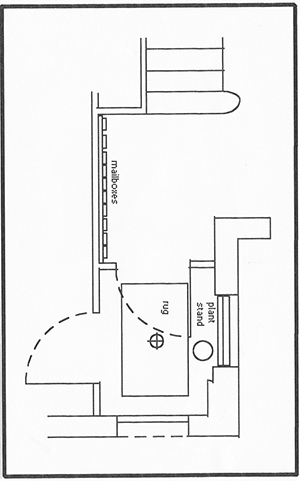
Figure 1. Plan of vestibule and lobby. |
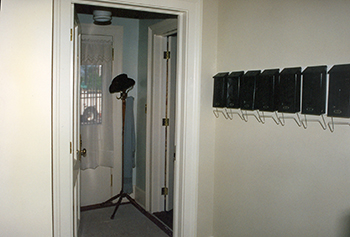
Figure 2. Looking west from the building lobby into the apartment's vestibule |
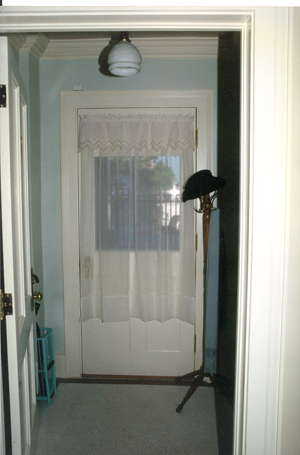
Figure 3. Looking west into vestibule toward door to front porch. |
In the narratives, items in bold are those that are mentioned either in Mitchell/Marsh letters or by Stephens and Bessie’s recollections from the 1950s or those that appear in the Lane Brothers photographs or in the Eliot collection. Inclusion of other items has been based upon other somewhat less reliable sources like the reminiscences of Margaret Baugh, Medora Perkerson and Harvey Smith or upon period publications and what was typical for the period. Secondary sources not mentioned in the text are included at the end of each room description.
Vestibule
As visitors descend the stairs from the second floor, there eye will be immediately engaged by the open door to apartment #1, the red-and-white tile floor and the row of ten black, metal mailboxes mounted on a board at the foot of the stairs. Each box will be numbered and have the names of each of the occupants as per the 1926 city directory. Only when reaching the bottom will visitors notice the ornate, lion's-head newel post, which was one of the first things people saw when entering the building's original entrance and which occupants are said to have rubbed for good luck.
No documentation has been located for the furnishing and decoration of the vestibule itself, except to note the calling cards that were apparently tacked to the front door for a brief period when they first moved into the apartment and a sign stating visitors hours, which Mitchell only threatened to post but apparently did not in fact do. [1] The calling card should read "Mr. and Mrs. John Marsh," since the separate Mitchell and Marsh cards appear to have only been in place for a very short time.
With doors on three sides, and the porch door swinging the "wrong" way, there is no room for a full-size hall stand and the logistics of museum visitor entrance into the apartment preclude even the simpler coat rack that could have been in this space. Yet there is room for a small painted brass "pedistal [sic] table" like that Mitchell described in her inventory. Mitchell describes its provenance and her use of it as a plant stand or "fernery." With the low light levels in the rest of the apartment, this may have been one of the brightest corners of the apartment even with the overhanging porches. The table should be located in the southwest corner of the vestibule in the winter but could be moved to the porch at other times.
The window and the porch door should both have window shades and simple white sheer curtains on plain brass rods. A small rag or woven wool rug, no larger than 3' x 5', would also be appropriate.
The light fixture should be an electric fixture with a simple, circular metal base and plain milk-glass globe.
Sources: See Gordon-Van Tyne Architectural Details 1915, 123, for mailbox; Lane Brothers photograph #5 for painted metal table; inventory, 2, for description and use (may be the same table); Alladin Homes, 84 for light fixture; Marinelli, Home Lighting, 1880–1930, 23.
Collection ListMailboxes (10): sheet metal (no brass or cast-iron), approx. 5" x 10" x 2" more or less; with newspaper rack beneath; painted black; with name plates showing apartment numbers and tenants as of 1926; mount on painted 1 x 12 board; locate on north wall at foot of stairs, with top of board at 60" from the floor. Calling card: read "Mr. and Mrs. John Marsh"; have printed commercially; need to research exact design, typeface, etc. Plant table: metal, preferably brass; c. 1892, approximately 12" x 12", 30" high; paint it white; use with glass shelf. Plant: Syngonium in 8" clay pot for plant table; ceramic dish for drainage; other small plants if table size and design allows. Light fixture:simple ceiling-mounted electric fixture; circular metal base, brass-plated or painted; milk-glass globe approximately 6" diameter. Rug: cotton or wool rag rug, approx. 3' x 5', oval or rectangular. Color not as important as design. |
|---|
Porch
The South's climate made a porch an absolute necessity for virtually all residences built in the days before air-conditioning and the activity that occurred on them became a hallmark of Southern culture.[2] Certainly then, the porch at "the dump" must have been an important space to Mitchell even though it is not specifically mentioned in her correspondence. With no radio or television (or fear of crime) to keep them indoors and the suffocating heat and humidity of July in Atlanta drawing them out, the porch, which looked out on a relatively quiet, tree-lined street, would have been a shady retreat any time of day or night.
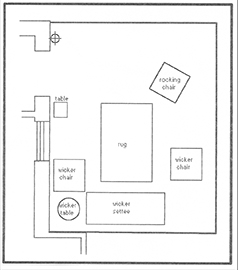
Figure 4. Plan of front porch. |
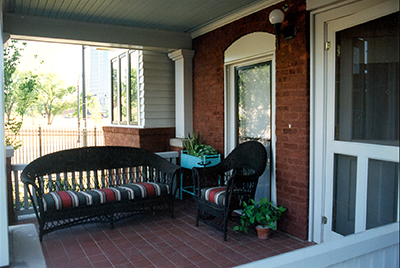
Figure 5. Front porch, looking north. |
A wicker swing or settee, a couple of chairs, a small table, a simple throw rug and houseplants in season would all be items that one might expect to see on the porch. These should be included in the collection even though they will only be seen from the street or through the windows. With the site fenced, security of these items should not be a problem.
Sources: Fredgant, American Manufactured Furniture, 9, 119, 123 for wicker furniture; Saunders, Collecting and Restoring Wicker Furniture, 62–68.
Collection ListWicker furniture: usually sold as a three-piece set consisting of settee, chair and rocker; painted green or white. Rocking chair: wood, brumby-style rocker. Table: square or round wicker table, approx. 24" wide. Plants: iinclude Sanseveria, Pothos, Syngonium and Philodendron, all of which can survive the dim light inside during the winter and little maintenance. Place all in clay pots with ceramic saucers. Rug: approx. 3½' x 5', Native American design perhaps. Light fixture: the light by the door should be a plain Craftsman-style, black metal lantern with frosted glass. It was wall-mounted to the right of door into the apartment. |
|---|
Front Room
Of course, this was the room in which Mitchell wrote the majority of her masterpiece and its furnishing and decoration should reflect that significance. The second-hand Remington typewriter on which Mitchell wrote GWTW is the most important surviving artifact from Mitchell's tenure at "the dump." Donated by Mitchell's estate to the Atlanta-Fulton County Library, it has been on display at the library for many years along with a number of other Mitchell artifacts. According to an interview with Francesca Marsh quoted by Walker, having bought the typewriter, Marsh scavenged a typing table from Georgia Power.[3] It was donated to the Atlanta Historical Society and is affixed with a plaque stating that it is "Table used by margaret Mitchell Marsh while writing Gone With the Wind; Gift of Mr. and Mrs. Stephens Mitchell." Measuring 32" x 18" and 26" high and with a patent date of 28 November 1916, it has a single drawer, a pull-out shelf, and folding legs.
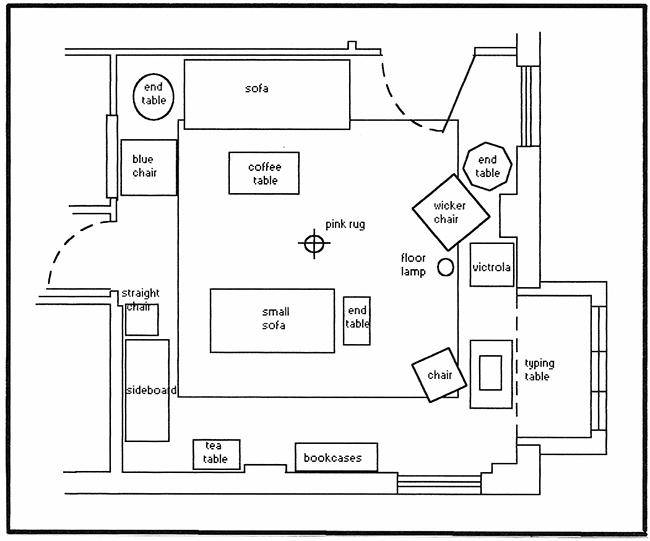
Figure 6. Plan of living room. |
The chair used by Mitchell while writing is also at the History Century. With turned front legs and a rush seat, it was also donated by Stephens Mitchell in 1956. It corresponds, perhaps, with the "straight back, victorian style" chairs that Ms. Von Hoffman remembered in her interview with Martha Bateman as being in the room.
Finally, the Atlanta History Center has the clipboard which Mitchell used as she made corrections to her manuscript. It was donated to the Atlanta Historical Society in 1937 by Mitchell herself. While the major corrections were made while she was living at the Russell Apartment in 1935, it is quite likely that this clipboard was in use long before that. Regrettably, none of these artifacts will be exhibited in this room, necessitating the acquisition of similar objects.
Although some sources place the table in the alcove, it is not clear that was actually the case. Based upon examination of the existing alcove and the photographs taken by Les Faulk in 1987, the alcove originally contained a built-in window seat with molded panels on the side walls above. There is no physical evidence for the shelves on either side that were remembered by Harvey Smith. The panels and other woodwork were in place in 1987 but the window seat had been removed. Since it is unlikely that the seat would have been removed so soon as the 1920s, it is assumed that it was in place while Mitchell lived there and that she placed the typewriter table in front of it, using the seat itself for the stacks of manuscript envelopes and supplies of paper that accumulated around her work space.[4] Nevertheless, the table does have folding legs and is relatively small, which would have made possible its easy relocation, which Mitchell is said to have done on occasion.[5]
Placed in front of the alcove window seat, the table, typewriter and chair will be the focal point of the front room. A towel thrown across the typewriter, a green eyeshade on top of that, the clipboard along side, and a stack of yellow copy paper on the window seat, all surrounded by stacks of books, manuscripts and journals, complete the image of the space as a place to write. The alcove window seat should be stacked with books as should the floor around the table and several manila envelopes stuffed with manuscript pages should be prominent in the disorder of this corner of the room.
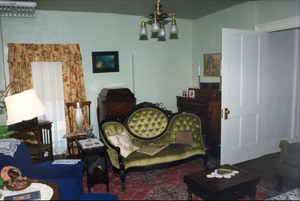
Figure 7. Living room, lookiing northeast. |
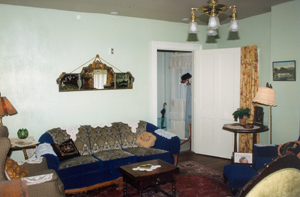
Figure 8. Living room, looking southwest. |
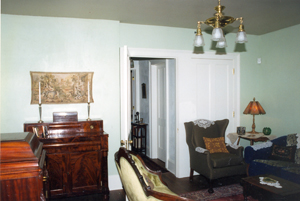
Figure 9. Living room, looking southeast |
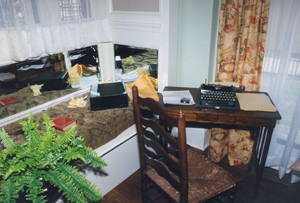
Figure 10. Living room, looking northwest. |
In her letters, Mitchell made reference to several items that were also in this room. The earliest of these were in the undated letter to Mary Marsh early in 1926 when she described their New Years open house.[6] In this letter, she notes that "We spread the tea table and the coffee table in the back room," implying that they were relocated, most likely from the front room.[7] The coffee table is mentioned by other sources as are the hammered-silver tray that John's sister had given them and the silver tea spoons from his uncle, both of which Mitchell mentions in her letter.[8] The silver service should be placed on the sideboard (see below), as recollected by Harvey Smith, along with a pair of silver candlesticks.
A few months later, Mitchell wrote her brother-in-law:
I regret to say that my main occupation consists of sitting in a bright blue wicker chair, pillowed with scarlet cushions and looking out thru blue ruffled curtains at a tall lombardy poplar that quivers incessantly. [9]
There is no certainty that this chair was in the front room, but it seems likely that it was. With the house on the north side of the building barely ten feet away, it is unlikely that any of the windows on the north side of the apartment could have provided the view described by Mitchell, although the eastern-most window in the bedroom could have conceivably afforded such a view. The most likely candidate then is the west window in the front room through which Mitchell could have looked out through the porches to Crescent Avenue, where the poplar may have been planted as a street tree. [10]
In the three letters to Harvey Smith, Mitchell provides some additional information on the furnishing of the front room. In the earlier letter, she writes of a dinner party for six in which they "put the bridge tables together in the front room and Bessie managed very well." These tables were probably card tables, perhaps even the sturdy oak folding tables that were popular in the period. However, since these were probably stored in the closet when not in use they are not included in the collection list.
In that same letter, Mitchell mentions a guest (Peggy Porter) "sulking on the little sofa," implying that there were two sofas in the room. [11] Finis Farr related that "for a while she used two or three envelopes [containing the GWTW manuscript] as a prop under the leg of an ailing sofa."[12] Edmund Davis, as quoted in Walker, remembered the same use of the manuscript, propping up "their old green-velvet Victorian sofa."[13] Later sources have also identified "a Victorian loveseat" [14] in the room. This is probably the same sofa shown in the Lane Brothers photograph #2 and described by Mitchell in her inventory and the same "little sofa" mentioned above. Bought by her mother at auction, this sofa was probably part of Mitchell's original furnishings at the Dump. The Mitchell family is thought to have retained this piece.
In the 15 March 1933 letter, after moving from "the dump," Mitchell writes in some detail about sofas, including her desire for a second-hand "Lawson type" sofa.[15]
I took the extra pair of chintz draperies that had been in the dump [sic] and made a slip cover for the blue chair you and Peggy fought over.. You know the curtains I mean, tannish and orange with London scenes on it. And by luck I found the same chintz spewed up at a Macy's [sic] sale and bought enough to make a slip cover for a sofa--when I get the sofa--for the living room. (I have the old blue horror out here in the sun parlor).
The identity of "the old blue horror," which must have been a sofa, is not certain, it was probably "the blue velvet divan" that she later gave to Bessie.[16] In another letter written about the same time she mentions a "lavender and blue" sofa in the sun porch. The sofa thus described could have been like those advertised extensively in the 1920s which were upholstered in two contrasting fabrics and came in a set that included one or two chairs.[17] Quite often only one chair was purchased with something like the wicker chair above used to round out the set.[18]
The "blue chair" mentioned in the letter was probably also from the Dump, since Smith had not yet visited her at the Russell, and probably the "blue arm chair" that Bessie remembered in 1956 as having been in the room. No doubt it matched the sofa. Harvey Smith's recollections include two armchairs, but one of these was probably the wicker chair mentioned above. Smith stated in his oral interview that Marsh always sat in "that chair at the end of the sofa," with both located in the southeast corner of the room.
It is unclear where the chintz curtains referred to in the letter above were used although a photograph of Mitchell sitting in a chair upholstered in a similar fabric has been identified by Jane Webb Smith (see Appendix F). The chair is probably the "blue chair" mentioned in the letter above and may have been one of the popular "Coxwell chairs" of the period.
According to Stephens Mitchell's notes in 1956, Bessie Jordan also remembered "the cellarette," or buffet, as having been in the front room. Harvey Smith recollected a similar piece as well in this room, located against the bathroom wall, although his recollection appears to have been that of a sideboard. Mitchell's inventory describes the cellarette and it is partially visible to the left in the black-and-white Lane Brothers photograph of the Della Manta dining room. Her inventory also states that the cellarette "accompanies" the mahogany sideboard described in the inventory and partially visible to the right in the Lane Brothers photograph. This and Medora Perkerson's recollection of "treasured family heirlooms of old mahogany" would suggest that both pieces were present in the Dump. These pieces are also thought to have been retained by the Mitchell family.
Bessie Jordan's recollections also include "two end tables (with bookracks underneath)." A single circular end table with books beneath is visible in the Lane Brothers photograph of the Della Manta living room but there is no indication that this is the same table and there is no reference to end tables in the Mitchell inventory. Nevertheless, they must have been there.
Stephens Mitchell also noted Jordan's recollection of "the pink rug (meaning, I think, the oriental that Aunt Edythe bought in Europe)" in the front room. No rugs are mentioned in the inventory but the front room rug at "the dump" may have been the rug that is visible in the Lane Brothers photograph of the dining room at the Della Manta. That rug appears to be of the type available in the 1920s. Due to visitor traffic through the apartment, however, it will not be possible to use authentic period rugs in the apartment unless padded runners are provided and visitor footsteps strictly controlled. Use of a modern reproduction of the sort of rug advertised on p. 87 of Woman's Home Companion might be appropriate. These were widely available in a variety of colors and could be easily reproduced today. Runners, which compromise the appearance of the apartment in a significant way, would not then be necessary since the rug could be inexpensively replaced as its condition warranted.
Jordan also remembered that their was a "cabinet-type Victrola" in the front room. No other sources have documented a Victrola but they were certainly a typical fixture of the period..
Harvey Smith and Von Hoffman both remembered bookcases in this room, which is not surprising given Mitchell's well-known predilection for books. A pair of early-twentieth century book cases is visible in the Lane Brothers photograph of the Della Manta living room. These could have been part of the furnishings for the Dump.
Another item that was probably in the front room was a metal, electric floor lamp, sometimes called a bridge lamp, de rigueur for living rooms of the 1920s. The floor lamp in Lane Bros. photograph #5 may have been in "the dump." In addition, there was probably a lamp on the end table in the southeast corner of the room, since the floor lamp would have been more useful on the other side of the room where it could be more easily relocated.
The two large windows in the room should have window shades and sheers behind the "blue ruffled curtains," which probably had valances and were tied back at mid-height. The alcove windows should have sheers but not shades or curtains.
Above the sofa, one of the tri-partite mirrors so popular in the 1920s would not be unexpected or, if Harvey Smith's recollection is correct, a framed print. The Harkness collection includes a print of an early 19th-century scene of young women at a piano of the sort that would be appropriate. The Eliot collection and Lane Brothers photograph #3 both include paintings that might be appropriate, although probably not over the sofa. The Eliot painting is labeled "Margaret's favorite painting." Other wall-hangings might include one or two of the many framed reproductions of rural scenes that were also readily available and quite popular in the '20s.
The ceiling-mounted light fixture was probably a four-light pendant fixture, electric, c. 1919. A variety of styles were popular but this one should be more functional than ornate.
The lap secretary that Mitchell's grandmother Stephens had given her as a child and which Mitchell described in her inventory must have been in the apartment. A similar item could be appropriately displayed in the front room. John's wire-rim glasses, a couple of glass or metal ashtrays or perhaps a smoking stand like that in the Eliot collection, should be included as well.
Clearly, a variety of other decorative and useful objects would be appropriate. All of the tables should have table cloths or runners. Linen with crocheted, tatted, or embroidered fringes were widely used as were crocheted doilies on the sofa and chairs. A small wood magazine rack next to the green sofa would represent a typical item as would vases, figurines and other knick-knacks. All of these probably adorned this room and a limited number of these should be included in the collection list.
If copies of family photographs such as those displayed at the Atlanta-Fulton County Library can be obtained, they could be appropriately displayed on the sideboard or on some of the endtables.
Facsimile copies of all three Atlanta papers (Constitution, Journal, and Georgian), The American Mercury, and other period publications would be valuable interpretive tools. As tour development continues, other items useful to interpretation will no doubt be identified.
The telephone may have been in this room although it could have been a wall-mounted model in the hall. Modern handsets were just becoming available in 1927 so the older models with rotary dial on an upright base and separate hand-held receiver might be the most appropriate.
Sources: Fredgant, American Manufactured Furniture, 12, 16, 21, 54, 122, 172; Fitzgerald, Four Centuries of American Furniture, 296–97; Alladin Homes, 23, 33, 35, 51, 60, 63, 88, 103; Gordon-Van Tyne, Architectural Details 1915, 83; Ladies Home Journal, March 1924, 122; Ladies Home Journal, August 1926, 159; Woman's Home Companion, March 1927, 40, 73, 87, 147.
Collection ListTypewriter: Remington manual, c. 1915-1920 in black case. Table:oak typing table with single drawer, pull-out shelf; original measures 32" x 18" and 26" high, patent date of 28 November 1916. Chair: ladderback, turned legs, plain stretchers, rush seat. Green sofa: Empire upholstered in green velvet. Blue sofa: c. 1925, overstuffed with wood trim, approx. 72" long, three-cushion, contrasting upholstery in velvet (?) damask. Blue chair: matches blue sofa Wicker chair: openwork wicker chair, c. 1920, painted bright blue; scarlet cushions on seat and back Tea table: two-wheel tea table, mahogany Coffee table c. 1925 Sideboard:mahogany, c. 1820; approx. 20" x 50" x 40"; two drawers, two doors; backboard. Bookcases:either oak or mahogany, c. 1920s Endtables: two with book racks below; circular or hexagonal Floor lamp: painted metal with fabric shade; similar to that in Lane Bros. photo #5. Victrola: cabinet-type; c. 1920. Magazine rack: wood, c. 1925. Rug: approx. 10' x 10'-12'; solid field with darker border; see Woman's Home Companion, 87. Curtains: blue sheer fabric with ruffled borders, tied back at mid-window Clipboard: c. 1920; wood Table clothes: circular for circular end table in southeast corner; rectangular for other endtables; these either fully crocheted or linen with crochet or tatted fringe; solid linen or period tapestry for sideboard Silver Service: five piece; ought to be nineteenth century Candlesticks: pair silver candlesticks for sideboard Books: at least fifty period books Copy paper: yellow, two reams Envelopes: manila, 9 x 12 Eyeshade: green eyeshade Towel: plain white |
|---|
Closet
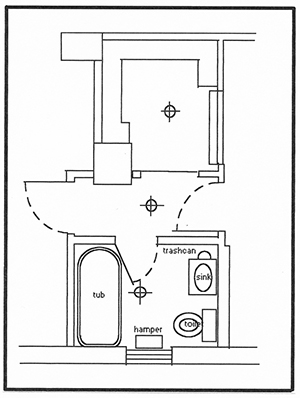
Figure 11. Plan of closet, hall, and bathroom. |
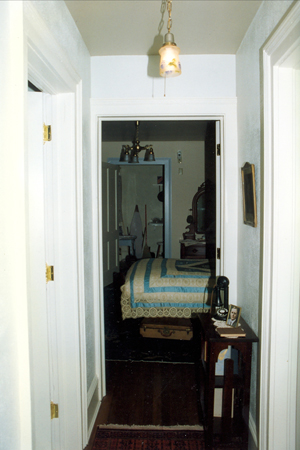
Figure 12. Hallway, looking east into bedroom. |
|
Figure 13. Hallway, looking southeast. |
No documentation for the contents of this closet has been located. Beyond the obvious articles of clothing, this closet must have been jammed with other articles as well, since it was the only closet in the apartment. In order to expedite traffic flow through the narrow hall, the door to this space should be kept closed. The space can be effectively used for museum storage.
Hall
No documentation has been located for any objects that may have been located in this space. A small framed print on the north wall to the left of the bathroom door would be appropriate.
Bathroom
Two of Mitchell's letters reference this room. In her letter to Mary Marsh in early 1926, Mitchell noted that for the New Years open house that she had placed the handmade guest towels with the filet inlets that John's sister had made for them in the bathroom with a sign above "warning" that they were "just for ornament."[19] In addition to these, obviously, would have been more common-place cotton terry cloth towels. In her 23 July 1927 letter to Harvey Smith, Mitchell left an interesting insight into how she relaxed.
[I'm] just in from New York after a vacation of a little over two weeks. I had all mail held up at the 10 [sic] Street P.O. and so your letter reached me only an hour ago. I've just read it in the bath tub. (In some ways, the Hard-Boiled Virgin had common sense--and one of the ways was in the use of hot baths.)
The window should be shaded and curtained, perhaps in a printed fabric similar to that with the "London scenes" mentioned by Mitchell in her March 1933 letter to Harvey Smith and shown in photographs taken of Mitchell for the Journal in 1937. In addition, a small wicker laundry hamper and a metal trash can would be appropriate between the toilet and the sink. An oval hooked rug would be appropriate on the floor as would a small vase of philodendron on the toilet tank top.
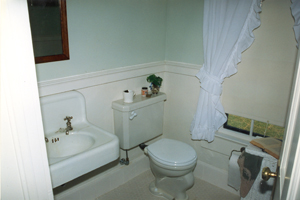
Figure 13. Bathroom, looking northwest. |
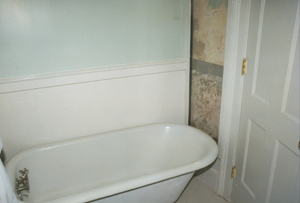
Figure 14. Bathroom, looking southeast. |
Sources: Ladies Home Journal, November 1929, 154; Morgan Woodwork, BBuilding With Assurance, 204–206; Gordon-Van Tyne, 124; Mott, Modern Plumbing, 94–95, for accessories; Lindstrom, "Post-Victorian Interiors: Bathrooms," Old House Journal, 56–61; Woman's Home Companion, 90; Jennings, Vernacular Interiors, 178, 186, 194; Del Sordo, "Bathtubs," Old House Journal, 38–42; Winkler, Well-Appointed Bath, 60, 62, 94–95; Monnich, "Bathrooms with Character,"Old House Journal, 127–129.
Collection ListTub: enameled cast-iron, clawfoot, c. 1919; 4-1/2' or 5' long; no shower or shower curtain. Sink: wallmounted enameled cast-iron with backsplash, c. 1919. Mirror: painted wood frame, hung above sink. Hamper: painted wicker Towels: solid colors, lightweight; include face clothes and hand towels. Accessories: soap dish, toilet paper holder, tumbler holder, towel bar; all c. 1919. Bath Mat Scales |
|---|
Bedroom
Mitchell left several references to this room in her letters. Again, her early 1926 letter to Mary Marsh provides the most extensive information, referencing a bed, of course, and a dresser, "which must needs be a buffet in times of stress." On the dresser, she placed a lace scarf that Mary Marsh had given them and on the bed a "dainty boudoir pillow" from Gordon and Francesca Marsh and a blue silk and lace bedspread.
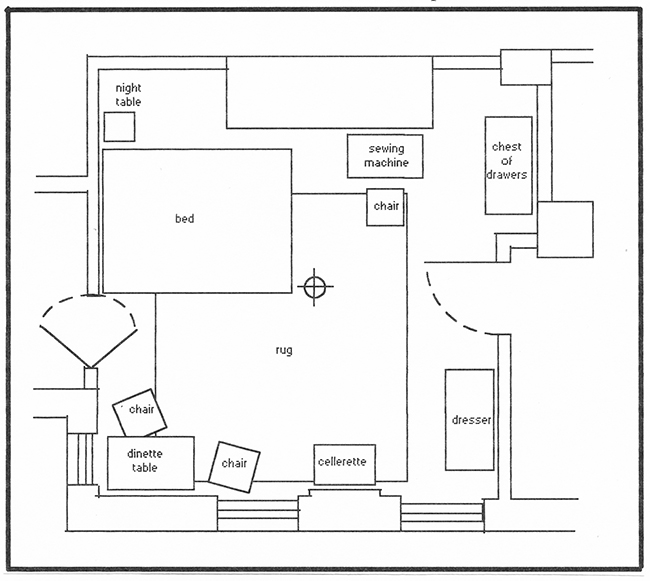
Figure 15. Plan of bedroom. |
Precise identification of this bed remains problematical. Mitchell described it in her letter to Harvey Smith on 15 March 1933:
The bed still remains a thing of horror and I haven't even had it done over as I wouldn't like it if it were plated with gold. I think I will look about and see if I can find a walnut bed that towers up with carved acorns, squirrels, obese cupids and perhaps an angel with a flaming sword on it.
The only other mention of the bed is in her letter to Frances Marsh Zane on 19 June 1934 when she mentioned having "caromed against the sharp point of the bed one evening" in 1927, injuring her breast.[20]
Margaret Baugh recalled that Mitchell described the bed as being "early Rutherford B. Hayes" era.[21] Mitchell's inventory describes a 3/4 size bed that was "probably Grandmother's bed" and was "Rutherford B. Hayes era." Since her grandmother had already broken up housekeeping in 1925, it is quite possible that this bed and the walnut dresser and mirror described in the inventory furnished the bedroom at "the dump." However, Mitchell's inventory also describes the bed that her mother purchased for her (Margaret's) bedroom at 1401 Peachtree. She described it as being "mostly walnut, approximately 1810-1830, footboard spooled with curving arch top, headboard solid." The "mahogany dresser" that Mrs. Mitchell bought at the same time (c. 1915) was described as having a "serpentine front," with the top measuring 42" x 19-3/4" and 36" high. Given Finis Farr's statement that the furnishings included some from "the Seventies and Eighties" and none of the items in the front room seem to fit this description, Grandma Stephens' bed seems most appropriate here.
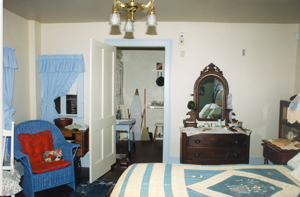
Figure 16. Bedroom, looking east into kitchen. |
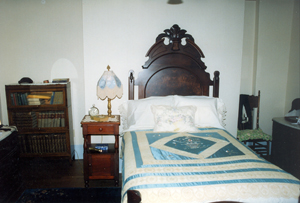
Figure 17. Bedroom, looking south. |
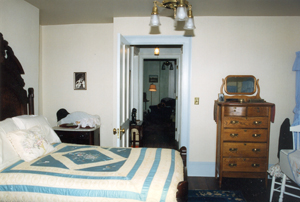
Figure 18. Bedroom looking west. | 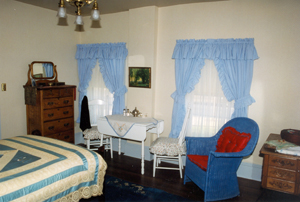
Figure 19. Bedroom, looking northwest. |
As a wedding gift to Mitchell and Marsh, the staff of the Atlanta Journal gave the couple a rug, which was used in this room. It may be one of the rugs, perhaps the one on the sun porch, seen in the Lane Brothers photographs. Stephens Mitchell's notes in 1956 described it as "the blue rug (Chinese pattern)(which was partly a wedding gift from the Journal staff)(John's piece said that he--or they--added to the money-wedding gift from the Journal staff to make up the price of the rug." Attached to the rug was a white satin ribbon, now in the MM Coll. at the University of Georgia, on which was printed in gold letters "From your friends on the Atlanta Journal" followed by the names of Mr. and Mrs. Angus Perkerson and seventy-seven other Journal staffers. A modern reproduction may be found that would appropriate for replacing this rug. If not, the simple carpet described for the front room could suffice.
Although several framed prints are visible in the Lane Brothers photographs of the Della Manta apartment,[22] Mitchell mentioned only one in her letters, that being the picture that she cut from an elaborate brochure advertising a subscription set of The Memoirs of Jacques Casanova and placed in an inexpensive frame. Mitchell described it in a letter to Henry Marsh in 1926:
It now hangs on one side of our bed--one of our most obscene and highly prized possessions. The background is black, there's a medieval looking bed, a lady in it so nude as to make the word nude seem pale, and in a position which defies description. Then there is Cassy himself, minus clothing, standing beside her and with an expression on his face that also defies description. It horrifies all our purer friends but they don't dare mention it.[23]
The only 1924/1925 version of Casanova that was illustrated and sold by subscription was privately printed by Aventuros in 1925, with illustrations by Rockwell Kent, including an image that must be the one described by Mitchell.[24] A facsimile of this print should be framed and hung on the south wall to the left of the chimney breast.
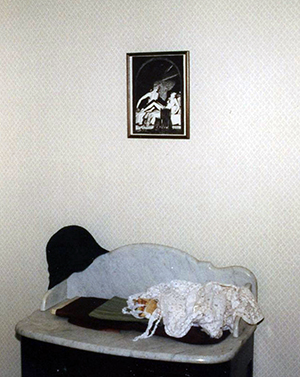
Figure 20. A copy of the 1925 Rockwell Kent illustration for Casanova hanging in the bedroom. |
Other items mentioned in the current documentation include a "bedside table and bookstand," mentioned by Stephens Mitchell's notes from 1956. Curiously, the only items that he specifically noted as being in the bedroom were these two pieces and the rug. Harvey Smith and others also remember Mitchell's grandmother's sewing machine as having been in the apartment. This fits with her known sewing skills, particularly in making pillows, and its placement in the bedroom is logical.
As in the living room, additional items will be necessary in order to fully furnish the room. The windows should be shaded and curtained as in the living room using even the same color. Runners should be included for all furniture and an appropriate array of period objects could be placed on the dressers. A small lamp should be placed on the bedside table along with a windup alarm clock, an ashtray and books. Note that Margaret Baugh stated that Mitchell kept a pistol on her bedside table for years, supposedly out of fear of her first husband, Red Upshaw.[25]
Sources: Morgan Woodwork, Building With Assurance, 189, 190, 192; Fredgant, American Manufactured Furniture, 17, 20, 23, 51, 55, 72, 223; Kennedy, Hoosier Cabinets, 59; Fitzgerald, Four Centuries of American Furniture, 298–299; Lindstrom, "Post-Victorian Bedrooms," Old House Journal, 50–54.
Collection ListBed: 3/4 size, approx. 56" x 78", walnut, c. 1880; knobs on footboard posts, fleur-de-lis on top of arched solid top Mattresses: two feather mattresses and two pillows Nighttable: with or without a drawer; odd piece, not part of a set Dresser: walnut, approx. 37" x 18" x 36"; three drawers with walnut pulls; may have marble top Mirror: walnut frame with carving at top, approx. 16" x 26", matches dresser Chest-of-drawers: 1900-1920, oak, three or four drawer Dinette set:drop leaf table with two to four chairs, painted wood; part of set with Hoosier cabinet, etc.? Cellerette: mahogany, one drawer, one door; approx. 17" x 27", 36" high; should be similar to sideboard in front room. Sewing machine: oak, pedal power, c. 1900. Sewing chair: spindle-back oak, c. 1900; leather or wicker seat with cushion.. Light fixture: two-light, ceiling mounted, c. 1919. |
|---|
Kitchen and Back Porch
No archival documentation has been found for the furnishings in this room. The location of a wall-hung sink on the east wall in the southeast corner of the room was documented by the remains of its supply and waste lines. It was probably enamelled cast iron of the type typical of the period. The stove is totally undocumented except that it was most probably gas. The only other furniture in the room, given its small space, was probably a "hoosier cabinet," a common-place item in kitchens of the day, which generally did not have the built-in cabinetry that would become common in the 1930s. Although there would certainly have been an ice-box or one of the then relatively new refrigerators, no documentation has survived to identify what was in the Dump. It is probable that an old-fashioned ice-box was used and, as they often were, kept just outside the kitchen door.
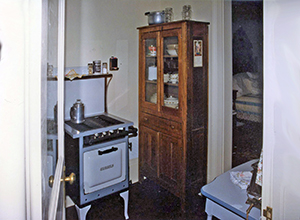
Figure 22. Kitchen, looking southwest. |
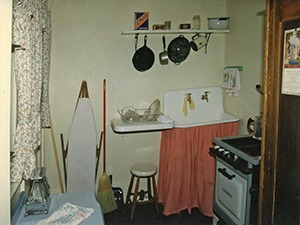
Figure 23.Kitchen, looking east. |
One of the small, foot-square, four or five shelf-high enclosed metal cabinets that were often seen in these kitchens could stand to the left of the sink and not impede the door. In addition, a small stool was probably in the house, perhaps under the kitchen sink along with a trash can to the right of the stove.
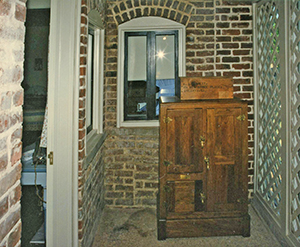
Figure 24. Back porch, looking west. |
Small ceramic or tin dishes on newspaper on the floor under the sink would be appropriate, given Mitchell's predilection for cats.
The light fixture should be similar to the one in the hall.
A linoleum "rug" might have been used here over the wood floor but the ruinous condition of the floor in 1995 prohibited identification of anything earlier than the c. 1940 green asbestos tiles. Similar products remain in production and an appropriate substitute for a period piece may be possible.
The window and door should both be curtained but not necessarily shaded.
Sources: Morgan Woodwork, Building With Assurance, 181–187; Fredgant, American Manufactured Furniture, 12, 19, 73; Kennedy, Hoosier Cabinets, 40–41, 49, 51, 57, 59, 82; Fitzgerald, Four Centuries of American Furniture, 298; Ladies Home Journal, April 1924, 163; Bock, "Stove Love," OHJ, 27–31; Cotton, "Sinks," Old House Journal, 270–278; Monnich, "Recreating the 'Modern' Kitchen, 1899–1930," Old House Journal, 12–15.
Collection ListSink: porcelain on enamel with backsplash, one bowl with drainboard on right, c. 1919. Stove: gas, c. 1919, no more than 24" wide. Cabinet: Hoosier-type cabinet, 36" apartment model. Cabinet: metal storage cabinet, approx. 12" square, four or five shelves Stool: wood or metal Linoleum: about 6' x 6' Kitchen utensils: wall-hung metal rack with kitchen utensils, painted wooden handles. Ceramic bowls: variety for Hoosier cabinet Towels, etc.: assortment including potholders. Trashcan: metal |
|---|
![]()
Selected Bibliography for Interiors
Alladin Home. Aladdin “Built in a Day” House Catalog, 1917. Dover Publications, 1995.
Bock, Gordon. “Stove Love: A Buyer’s Guide for Antique Kitchen Stoves, with Hints on Maintenance.” Old House Journal (July/August 1989): 27–31.
Cotton, J. Randall. “Sinks.” Old House Journal (July/August 1986): 270–78.
Del Sordo, Stephen. “Bathtubs: An Architectural History.” Old-House Journal. Vol. XVIII, no. 5 (September-October 1990): 38–42.
Eason, Cassandra. Homes and Interiors of the 1920s. Lee Valley Tools, 1989.
Fitzgerald, Oscar P. Four Centuries of American Furniture. Wallace-Homestead Book Co. 1995.
Fredgant, Don. American Manufactured Furniture. Schiffer Pub Ltd; 3rd Revised ed., 1997.
Gordon-Van Tyne Co. Architectural Details 1915. Davenport Iowa, 1915; reprint, Watkins Glen NY: American Life Foundation, 1985.
Jennings, Jan, and Gottfried, Herbert. American Vernacular Interior Architecture, 1870–1940. Iowa State University Press, 1993.
Kennedy, Philip D. Hoosier Cabinets. Self-published, 1989.
Ladies Home Journal, March 1924, April 1924, August 1926, November 1929.
Lindstrom, Bekka. ”Post-Victorian Interiors: Bathrooms.” Old-House Journal. Vol. XV, No. 6 (November-December 1987): 56–61.
_____. “Post-Victorian Bedrooms.” Old House Journal Vol. XV, no. 5 (September-October 1987): 50–54.
Marinelli, Janet. “Home Lighting, 1880–1930: A History of Early Electric Fixtures.” Old House Journal Vol. XVII, No. 1 (January-February 1989): 34–41.
Monnich, Joni. “Bath Rooms With Character.” Old House Journal, Vol. 10, no. 6 (June 1982): 127–29.
_____. “Re-Creating the ‘Modern’ Kitchen, 1899–1930.” Old House Journal Vol. XI, No. 1 (January-February 1983): 12–15.
Morgan Woodwork Organization. Building With Assurance. Morgan Woodwork Organization, 1921.
Mott (J. L.) Iron Works. Modern Plumbing. New York: J. L. Mott Iron Works, 1914.
Mountjoy, Richarad. 100 Years of Bell Telephones. Schiffer Publishing; First Edition (January 6, 1997).
Niles, Andrea, and Davida Rochlin. The Evolution of the Porch. Georgia Trust for Historic Preservation Pamphlet Series.
Saunders, Richard. Collecting and Restoring Wicker Furniture: A Complete Handbook for the Collector, Antiques Dealer, and Furniture Restorer. Crown Publishers, 1976.
Seale, William. Recreating the Historic House Interior. Nashville, TN: American Association of State and Local History, 1979.
Swedberg, Robert W. and Harriet. Furniture of the Depression Era: Furniture & Accessories of the 1920’s, 1930’s, & 1940’s. Collector Books, 1990.
Winkler, Gail Caskey, and Fisher, Charles Elbert. The Well-Appointed Bath: Authentic Plans and Fixtures from the 1900s. Preservation Press, National Trust for Historic Preservation, 1989.
Woman’s Home Companion, March 1927.
Notes
1. Walker, Margaret Mitchell, 132.
2. See Raymond Arsenault, "The End of the Long Hot Summer: The Air Conditioner and Southern Culture," The Journal of Southern History, Vol. 50, No. 4, November 1984; Andrea Niles and Davida Rochlin, The Evolution of the Porch.
3. The source of the story (Farr, 79, and Pyron, 225) that Mitchell used a "spindly sewing table" as a typewriter table is unclear. See Walker, Margaret Mitchell, 162.
4. Farr, Margaret Mitchell, 79; Walker, Margaret Mitchell, 180.
5. See Harvey Smith interview.
6. Walker, Margaret Mitchell, 139–140.
7. Coffee tables were only just becoming popular in the 1920s. The first were simply tea tables with the legs cut down.
8. See Medora Perkerson. Ms. Von Hoffman in her interview with Martha Bateman remembered a "small, dark wood table with a silver tea service" in the front room.
9. See MM to Henry Marsh, "Tuesday AM," May or June 1926; Walker, Margaret Mitchell,152.
10. Blue was a favorite color for Mitchell apparently. She later describes a blue sofa in this room and a blue bedspread in the bedroom.
11. See p. 7, Harvey Smith interview where he remembers Mitchell usually sitting curled up at one end of the sofa.
12. Farr, Margaret Mitchell, 81.
13. Walker, Margaret Mitchell, 189.
14. Von Hoffman interview, Martha Bateman.
15. A Lawson sofa is included in the Elliot's Antiques collection.
16. See Stephens Mitchell notes, estate files.
17. See American Manufactured Furniture, 122; Woman's Home Companion, 147.
18. See Four Centuries of American Furniture, 296.
19. 100 Years of Bell Telephones, 134–138.
20. Walker, Margaret Mitchell, 139–140.
21. Walker, Margaret Mitchell, 172.
22. Walker, Margaret Mitchell, 134.
23. The Elliot Antiques collection retains two of these. The Harkness collection also includes some framed prints although none that are visible in the Lane Brothers photographs.
24. Walker, Margaret Mitchell, 134.
25. This information courtesy of Jane Webb Smith who located the publication in the Library of Congress.
26. Pyron, Southern Daughter, 194.
![]()
© tomitronics.com — all rights reserved |
